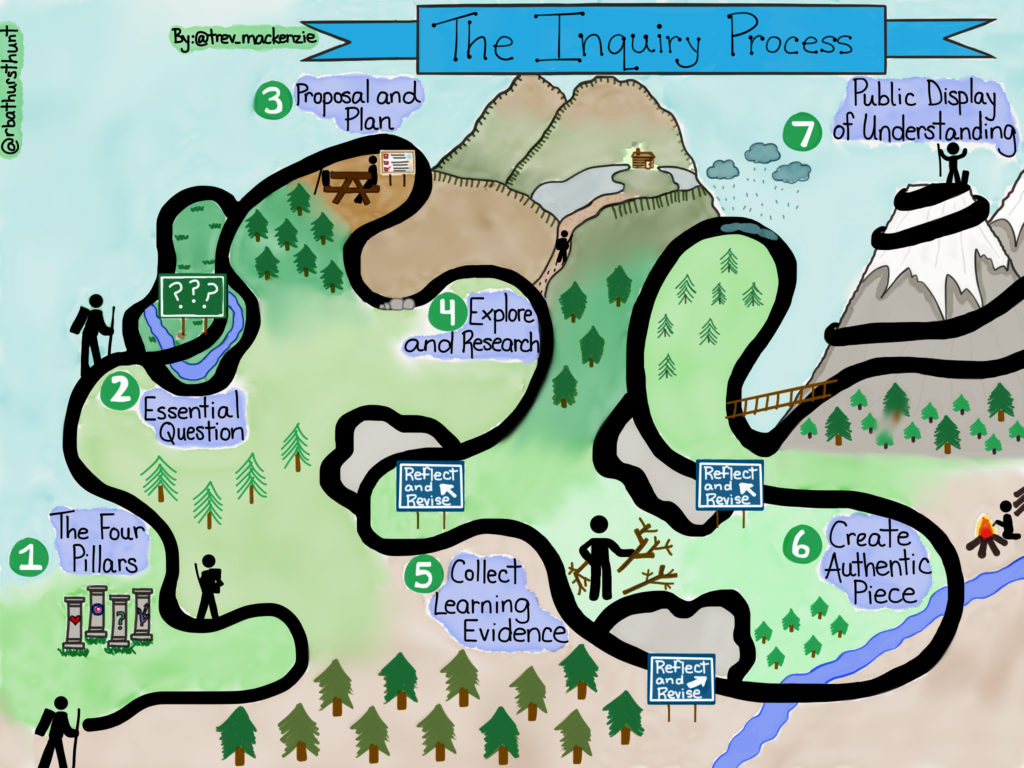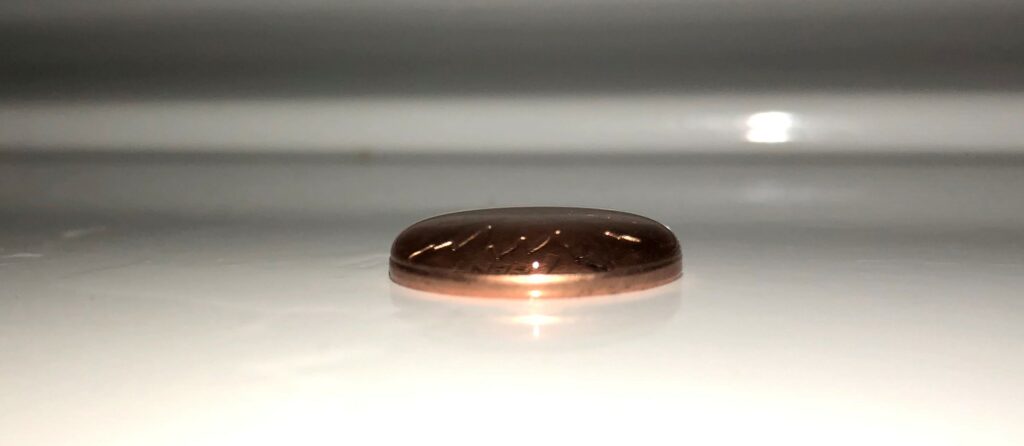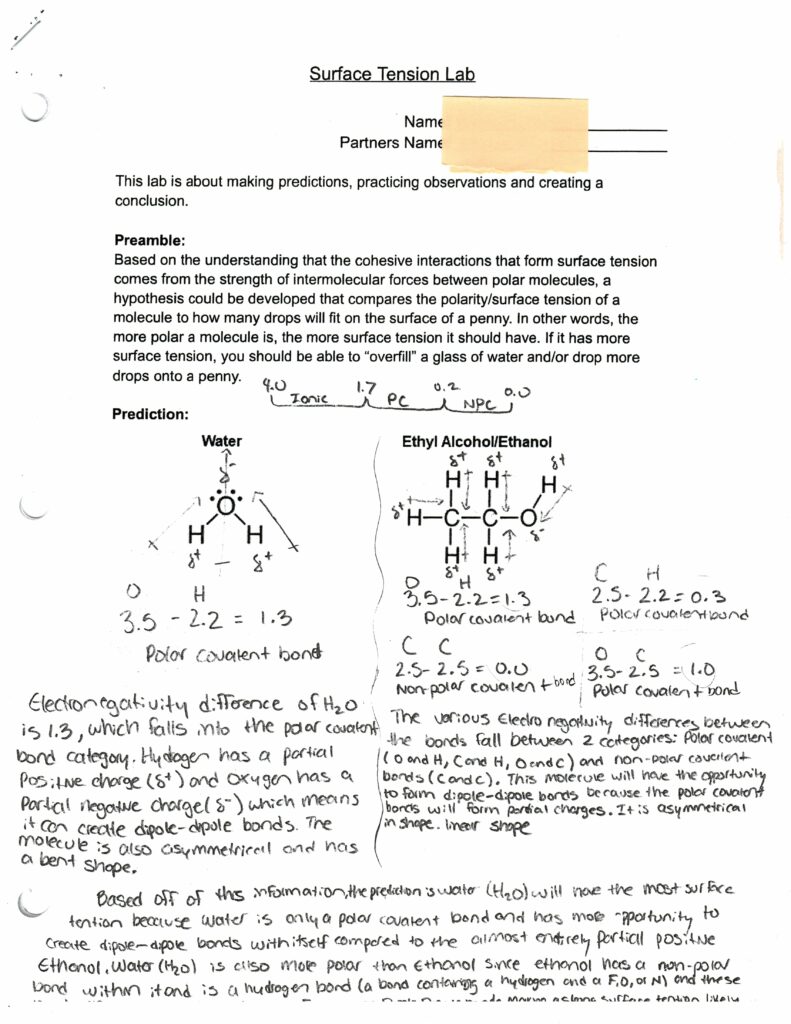Moving forward in my trajectory towards becoming a professional educator, I have chosen to explore the Dive into Inquiry approach to educational inquiry created by BC educator, Treavor Mackenzie. This approach facilitates a broad range of conditions that could be used by myself or students. Furthermore, I am expecting practicum placements within science and mathematics departments and the Dive into Inquiry approach aligns cleaning with the scientific method through process. I believe this inquiry approach empowers and nurtures student voices, strengths, curiosities, and interests, and therefore compliments holistic assessments that account for social-emotional, physical, and cognitive developments. The Dive into Inquiry approach has different types of inquiry—including free inquiry, guided inquiry, controlled inquiry, and structured inquiry—that can be used to scaffold student inquiry while taking into consideration the intent/focus of the inquiry, the age and skill set of the students, the maturity level of the class, and what resources are available. Personally, this approach to learning and teaching makes the most sense to me and will allow me to engage with my own passions, ideas, and curiosities when creating lessons and materials.

In block 1 of the B.Ed. program at UNBC, I proposed a guiding inquiry question that stated, “[l]ike all BC educators, we are responsible to the curriculum; but, within this curricular space, there is opportunity for innovation, ingenuity, and change. How will bringing new ideas to an old system affect educators and learners and how does one know when something works?” This guiding question accounts for any number of “new ideas;” however, it was written with intention around applying new models of holistic assessment, translation efficacy between proficiency scales and letter/percentage-based grading systems and reporting, cross-curricular instruction embedded in project-based learning within academic departments, co-creation of learning goals (like student labs), and technological integration. Throughout block 2, I gained insight and experience on some of my inquiries and have learned that the work required to effectively introduce new ideas to an old system must be carefully considered because, while there is not necessarily push back from staff and administration, there is not a great deal of support. For example, when the new BC curriculum became implemented at College Heights Secondary School, I learned that six teachers developed a proficiency rubric of assessment over three days on a grant, and that was the entirety of professional development resources allocated for its implementation. Although the teachers who developed the rubrics worked efficiently and created an effective product, the majority of the teaching staff at CHSS did not integrate or consider it in their practices. This indicates to me that new curricular change is not being effectively initiated at a systemic and administrative level, and teachers who are restructuring their methods are conducting change primarily on their own accord. As a teacher candidate entering the profession, I have an opportunity to pioneer change from the start; however, considerations of time management and burn out must be carefully factored against the weighted process of trying new ideas.
During my 391 practicum, I created and adapted a student lab on surface tension that aligned with the Dive into Inquiry process. This lab was conducted the Friday before the students’ summative unit test and was initially going to be a day of review, but I wanted them to do something hands-on and I had already planned to do a lab on surface tension at some point. The experiment was simple: the effective of surface tension for different liquids could be quantified relatively by counting how many drops of the substance could fit onto the surface of a penny without spilling over. I then inquired how I could take this simple experiment and make it into a robust review lesson based on the material covered. I started by doing the experiment myself, trying different liquids, droppers, pennies, etc., and from this process, I formulated my essential question: can we predict which chemical would produce more surface tension based on the polarity of the molecules in the substances? The students had already learned the relevant content to perform these predictions—like performing electronegativity calculations and determining bond types—and therefore making such predictions would require students to review and apply the vast majority of concepts they would have been reviewing anyway.

I then proposed a plan by creating the lab activity that focused on the Questioning and Predicting curricular competency. This plan included assessment rubrics and criteria in addition to procedural instructions, data tables, and locations for making predictions and writing conclusions. This lab could have focused on any number of competencies (I.e., I originally wanted to co-create this lab with students—it then would have focused on the Planning and Conducting curricular competency). I then explored this plan through having students conduct the experiment from which I obtained many exemplars. These exemplars were then used in EDUC 372 to display to the instructor and my teacher candidate colleagues, the process and success of this “review” lab from inquiry.

As I transition into Block 3 of the program, I have developed three inquiry-based goals. First is to inquire into furthering technological integration in the classroom. Although all students in this district are given Microsoft email accounts that provides access to related educational software, very few classes which I have observed or taught in have effectively applied these tools. I value the efficiency and possibilities that are made feasible by integrating programs like Microsoft OneNote and Teams and will use this inquiry approach to implement them. I will further use this inquiry approach to explore my goals to use starter or warm-up activities at the beginning of each class in practicum, and to apply forms of holistic assessment where students are continuously informed during the learning process.